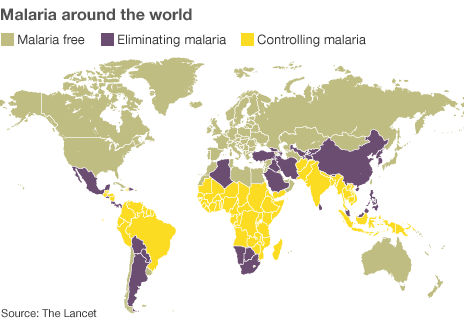
Nairobi — was 2010 a healthy or healthier year for you? Over the last 12 months, the health sector has been vibrant with the goal of leading Kenya to becoming a healthier nation.
At least 60 cholera deaths and over 3,000 suspected cases were reported in the first six months of 2010, raising fears of an epidemic due to poor sanitation and heavy rains.
Although the number was smaller than the 86 reported in the same period in 2009, it brought into focus the twin urban challenges of poor sanitation and hygiene and water and air pollution.
Most of the cholera cases were reported in slums where contamination of water and food could have been caused by uncollected garbage.
And with almost 90 per cent of all child deaths attributable to just conditions: neonatal causes, pneumonia, diarrhoea, malaria, measles, and HIV/Aids, Kenya could be on the right track to achieving Millennium Development Goal number four, aimed at cutting mortality by two-thirds by 2015.
The price of anti-malaria drugs was made affordable. with the cost of an adult’s dosage at Sh40 and that of a child at Sh10, the move was expected to provide drugs at the nearest chemist or health facility, curbing incidences of drug resistance.
But pharmacies sampled by the Nation from Nairobi, Mombasa, Naivasha and Meru were found selling the drugs at inflated prices of between Sh50 and Sh240 instead of the recommended Sh40 for an adult’s dosage.
Close to 300,000 children below five years old in western Kenya underwent polio vaccination, according to the Ministry of Public Health after neighbouring Uganda’s Bugiri District reported a polio case.
Known as a contagious viral disease that can lead to death, polio shows no symptoms in 95 per cent of those infected, thus the alarm by health authorities in the two countries.
An ambitious plan to treat diarrhoea among children less than five years was launched with parents administering early home treatment.
The guidelines are expected to reduce by half deaths due to diarrhoea in this age group by 2013. the health sector hosted a high profile politician whose condition was on the lips of most Kenyans before he gave details.
Prime Minister Raila Odinga was taken ill and his condition was widely discussed before he ended speculation with a detailed account.
Mr Odinga, who instructed his staff and doctors to provide public and regular updates, recounted how his condition was initially diagnosed to be malaria before other tests confirmed he was suffering from pressure on the brain, a condition known as chronic subdural haematoma.
September this year saw a continental call lodged by health specialists to find a lasting solution to the surge in diabetes cases in Africa.
Kenya is no exception, with fears that lifestyle diseases like heart failure and diabetes could overwhelm the health system if not tackled early.
In April Public Health minister Beth Mugo raised the alarm that lifestyle diseases could account for higher death rates than malaria, TB and Aids combined.
She launched a national diabetes strategy to reduce the cost of managing the disease and appealed to healthcare providers to reduce the cost of treatment.
Health experts further raised the alarm that city children were eating themselves to death. Poor diet, smoking, alcohol and unsafe sex were identified as leading vices.
And as Kenya joined the rest in marking World Aids Day, the government was challenged to employ a more aggressive approach to reach high risk infection groups.
National Aids/STI Control Programme head Nicholas Muraguri said his organisation was identifying risk groups and rolling out prevention programmes.
The year 2010 also exposed a syndicate trafficking in human body parts after two mortuary attendants were arrested with male genitals suspected to have been chopped off a body at the mortuary.
Brews suspected to be laced with methanol killed more than 40 Kenyans in separate incidents in Kibera and Shauri Moyo in 2010.
Reports also indicate that the pneumonia vaccine could soon cost as little as Sh12, a massive drop from Sh4,000 today, if studies being carried out in Kilifi and Thika in Kenya, as well as in the Gambia, prove successful.
Pneumonia is a major cause of death worldwide, especially among children, with around 16,400 Kenyans dying each year from the disease.
As Kenya welcomes 2011, the government may need to be more aggressive in its health programmes if it intends to meet the four-year-timeline of the MDG goals.
More News on allAfrica.com AllAfrica – all the Time